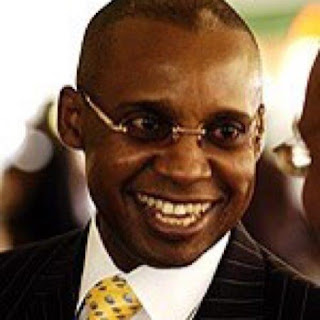Kenya's growth rate to hit 5.8 percent in Q1
 |
| Kenya's PMI March'17-March'18 Courtesy CFC Stanbic |
The Kenyan economy will post a 5.8 percent growth rate by the end of March and continue the same robust trend to the end of the year, experts say.
This comes after a lean eight months of 2017. The period between March and November last year, Kenya experienced a lean period we can report. Drought, coupled with political rumbling in the run-up to the August 8th general election slowed economic activity in the country.
According to CFC Stanbic, the PMI index declined constantly since March 2017 when it read 48 until October when presidential elections were held. In October, it read 34.4, the lowest level in a long time. The decline in PMI mirrors the decline in economic activity in the private sector. No wonder many companies are issuing a profit warning. The decline in profitability has also hit tax- collection putting the government in the red.
However, Kenya’s economic recovery has picked up the pace, international research groups say. The first pointer to the robust recovery is the PMI, the Purchase Manager's Index, which says that the PMI for February rose to 54.9, the fastest growth in 20 months.
The PMI is a composite measure of economic performance month-on-month covering 400 firms in Kenya’s private sector. It measures a weighted change in such variables as; New Orders which is weighted at 0.3, Output at 0.25, Employment at 0.2, Suppliers’ Delivery Times at 0.15, Stock of Items Purchased at 0.1
A reading above 50 shows growth in economic activity while a reading below 50 projects a decline.
According to CFC Stanbic, Kenya’s PMI turned north after the October Presidential elections, rising from a seasonally adjusted reading of 34.4 in October to 42.8 in November before crossing the Rubicon in December to close at 53. Since then it has been on the rise settling at 54.9 in February.
The report attributes the rise after eight months of decline to the end of the electioneering period and the swearing of President Kenyatta for his second term. The decline in the risk of violence opened the purse-strings both in Kenya and overseas resulting in rising demand for local goods.
The report does not project the future but its survey found some latent demand, an indication that the growth trajectory is here to stay. Even then, analysts say, that it points to a robust growth this year.
The Economist Intelligence Unit for instance, projects a growth of 5.3 percent this year which is in the range of projections by other analysts whose projection range from 5.3 to 6.0 percent. The Economic Focus group predicts a growth of 5.3 this year.
 |
| Agriculture: suffered from prolonged drought |
The trading Economics Group projects a quarterly growth rate of 5.8 percent in Q1; 5.5 in Q2; 5.6 percent in Q3, closing the year at 6.5 percent in Q4. In short, Kenya will post robust economic growth this year, marking a major turnaround from eight months of poor growth.
The poor growth, caused by among others factors, the long drought which made agriculture’s fortunes lean, and uncertainty due to political rumbling ahead of the elections last year. The lean times resulted in many firms in the private sector, especially those listed on the Nairobi Stock Exchange, issuing profit warnings. Retrenchment was also reported in those lean eight months.
The overall effect was lower tax -collection for taxes are collected from year-end trading profits. Consequently, the tax collector, the Kenya Revenue Authority, missed its revenue targets, punching a hole in the government’s kitty for the current financial year, ending on June 31st. As at the time of writing, some civil servants are yet to receive their February salaries due to cash flow issues at the treasury. Counties are yet to receive their remission from the treasury.
The lean times are likely to continue until the end of the current financial year in June, though the recently floated Eurobond 2 is likely to save the situation. The money, however, was not meant to recurrent expenditure.
Despite the lean times, however, analysts are upbeat that the economy will post a robust growth, create jobs and raise tax revenue targets. This is mainly because the economy is well diversified, meaning it does not depend on one sector for growth.
The ongoing construction of mega projects is said to be one of the sectors driving growth in Kenya. An expected turn around in the Kingpin of the economy, “agriculture supported by good rains, and an upturn in investment should bump up growth this year,” says the Economics Focus group, a view supported by the AFDB in its Kenya’s outlook which projects a 5.6 percent growth rate this year.
AfDB expects the services sector to continue leading the growth because, Kenya is the hub of ICT, Financial and logistics services in East Africa. It states that the continued investment in Rail and roads and the construction of the second runway at Jomo Kenyatta International airport will be a short in the arm for economic performance this year.



This comment has been removed by the author.
ReplyDeletelook like they have to do move struggle . it is hard for them but dont give up keep it up and be careful next time.meet and greet luton airport
ReplyDelete